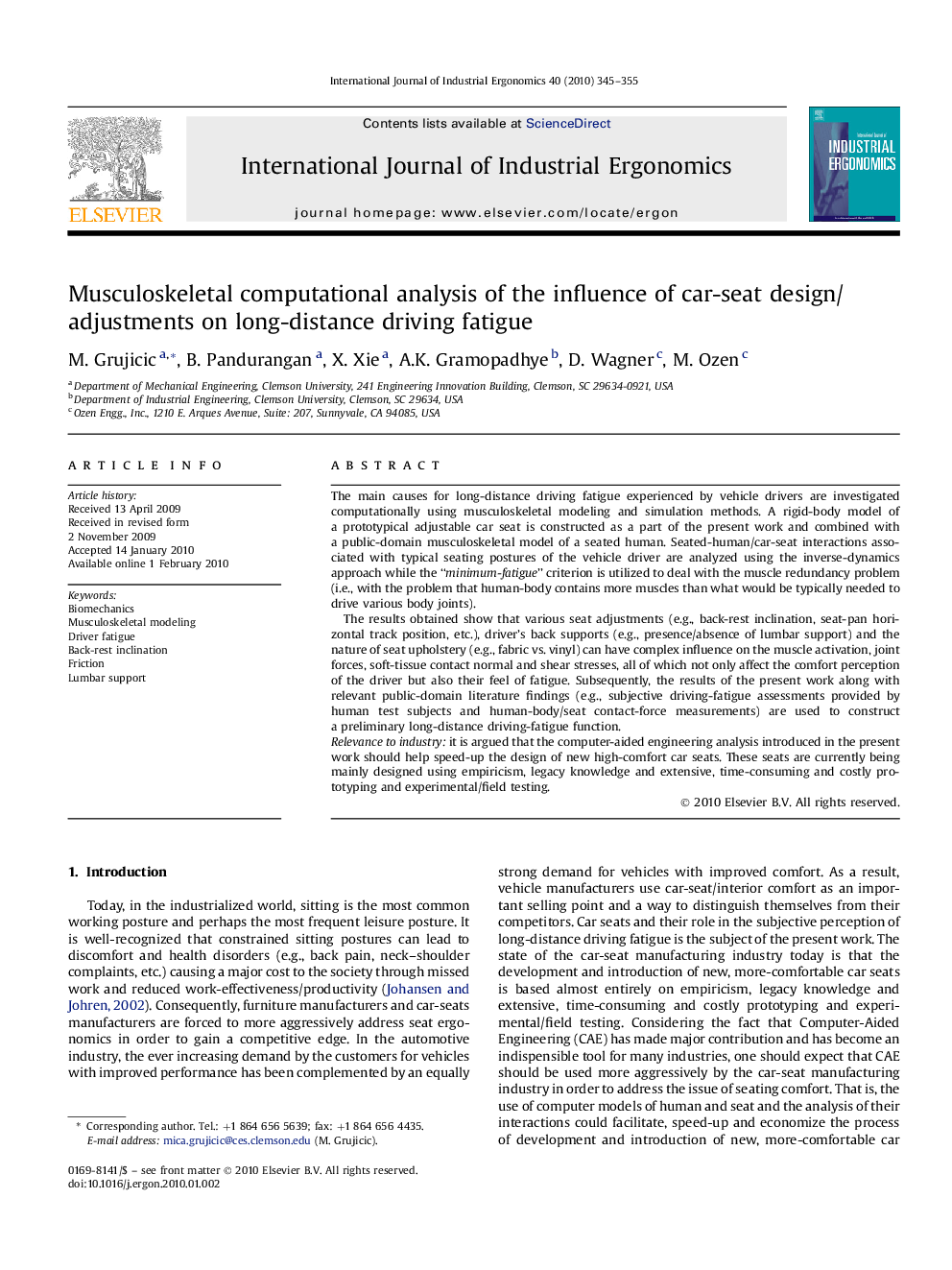| کد مقاله | کد نشریه | سال انتشار | مقاله انگلیسی | نسخه تمام متن |
|---|---|---|---|---|
| 1096439 | 1487458 | 2010 | 11 صفحه PDF | دانلود رایگان |

The main causes for long-distance driving fatigue experienced by vehicle drivers are investigated computationally using musculoskeletal modeling and simulation methods. A rigid-body model of a prototypical adjustable car seat is constructed as a part of the present work and combined with a public-domain musculoskeletal model of a seated human. Seated-human/car-seat interactions associated with typical seating postures of the vehicle driver are analyzed using the inverse-dynamics approach while the “minimum-fatigue” criterion is utilized to deal with the muscle redundancy problem (i.e., with the problem that human-body contains more muscles than what would be typically needed to drive various body joints).The results obtained show that various seat adjustments (e.g., back-rest inclination, seat-pan horizontal track position, etc.), driver's back supports (e.g., presence/absence of lumbar support) and the nature of seat upholstery (e.g., fabric vs. vinyl) can have complex influence on the muscle activation, joint forces, soft-tissue contact normal and shear stresses, all of which not only affect the comfort perception of the driver but also their feel of fatigue. Subsequently, the results of the present work along with relevant public-domain literature findings (e.g., subjective driving-fatigue assessments provided by human test subjects and human-body/seat contact-force measurements) are used to construct a preliminary long-distance driving-fatigue function.Relevance to industryit is argued that the computer-aided engineering analysis introduced in the present work should help speed-up the design of new high-comfort car seats. These seats are currently being mainly designed using empiricism, legacy knowledge and extensive, time-consuming and costly prototyping and experimental/field testing.
Journal: International Journal of Industrial Ergonomics - Volume 40, Issue 3, May 2010, Pages 345–355